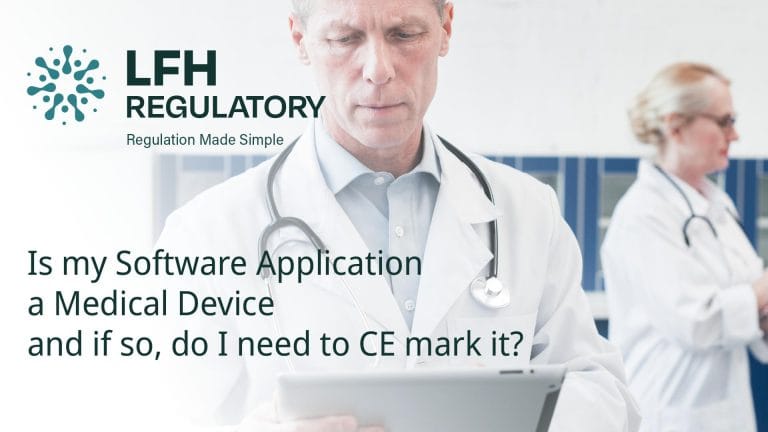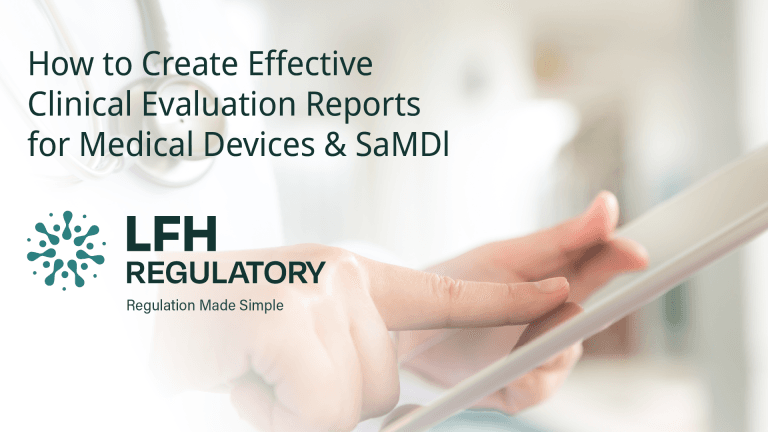Companion diagnostics (CDx) are increasingly critical in personalised medicine, offering vital insights into patient treatment and outcomes. With the rise of these devices, navigating the European Union In Vitro Diagnostic Medical Devices Regulation (EU) 2017/746 (IVDR) has become essential for manufacturers. CDx devices must undergo a conformity assessment by a notified body to obtain CE marking before entering the EU market. Early planning during drug development is crucial to ensuring timely patient access to new treatments.
It’s important to note that devices manufactured and used exclusively within health institutions established in the EU (so-called “in-house devices”) are conditionally exempt from most of the IVDR requirements. These devices are restricted to use within a single legal entity.
What is a Companion Diagnostic (CDx)?
For the first time, the IVDR legally defines companion diagnostics as:
“A device essential for the safe and effective use of a corresponding medicinal product to:
(i) Identify patients likely to benefit from the medicinal product before and/or during treatment;
(ii) Identify patients at increased risk of serious adverse reactions before and/or during treatment with the medicinal product.”
The concept of companion diagnostics has already been established in several countries, including Japan (PMDA) in 2012, the USA (FDA), and Canada (HCSC) in 2014. The primary distinction between the IVDR definition and those of other regulatory authorities is that IVDR excludes devices used solely for treatment monitoring of a medicinal product.
What are the CDx Development Scenarios?
CDx Development Scenarios: What You Need to Know
There are typically three key scenarios for developing CDx devices:
- Co-developed CDx: Developed alongside a medicinal product during its clinical development phase, typically for an initial marketing authorisation or a new indication.
- Follow-on CDx: Targets the same biomarker as the original co-developed CDx but is not developed in parallel with the medicinal product’s clinical development programme.
Transitioning CDx: Existing devices on the market under the IVDD (In Vitro Diagnostic Medical Devices Directive 98/79/EC) that are being transitioned to comply with the IVDR.
What Classification Do CDx Devices Fall Under?
Under the IVDD, CDx devices were considered low-risk general IVDs, where manufacturers could self-certify compliance. However, with the IVDR now in place, devices are classified into four categories from Class A (low risk) to Class D (high risk). Most CDx devices fall under Rule 3(f) of the IVDR, typically classified as Class C—indicating moderate to high risk, both to individual patients and public health.
CDx devices developed under the IVDD were self-certified, while under the IVDR, manufacturers must undergo a conformity assessment by a notified body, including technical documentation and quality management system (QMS) checks. In addition, the European Medicines Agency (EMA) plays a crucial role in evaluating the “suitability” of a CDx device in relation to its medicinal counterpart.
Interactions Between Manufacturers, Regulatory Authorities, and Notified Bodies
The IVDR introduces a significant link between the CDx manufacturer, notified bodies, and the relevant medicinal product regulatory authorities, including the EMA and National Competent Authorities (NCAs).
The process begins with manufacturers submitting their technical documentation to the notified body, which typically takes longer than the standard conformity assessment for IVDs. The notified body must also request a scientific opinion from the NCA/EMA on the suitability of the CDx device in relation to the medicinal product.
The notified body will assess the application, taking into consideration the scientific opinion, and convey its final decision to the medicinal product authority. Early interaction between the notified body and the relevant regulatory bodies is advised to ensure timely access for patients.
Tips for Bringing Your CDx Device to the EU Market
Step 1: Define the Intended Purpose and Classification
CDx devices generally fall under risk class C as per Annex VIII, Rule 3 of the IVDR. If the device’s intended purpose includes several medicinal products and indications, consider initiating a single consultation procedure to streamline the assessment.
Step 2: Establish a Quality Management System (QMS)
Ensure your QMS aligns with Article 10(8) of the IVDR and ISO 13485:2016, focusing on a risk-based approach. Maintain a robust risk management system in compliance with ISO 14971 to meet regulatory obligations throughout the product lifecycle.
Step 3: Prepare Technical Documentation and Performance Evaluation
Clinical evidence, including scientific validity, analytical performance, and clinical performance, is required to demonstrate that the CDx device accurately identifies patients suited for a specific therapy. Following ISO 20916 guidelines for clinical performance studies ensures compliance with the IVDR.
Step 4: Conformity Assessment
Unlike standard IVD devices, CDx devices must undergo individual conformity assessments as per Article 48(7) of the IVDR. If the device’s intended purpose covers multiple medicinal products, a single consultation procedure can be used.
Final Thoughts
In conclusion, companion diagnostics are pivotal in modern personalised healthcare. Manufacturers must navigate complex regulatory pathways, ensure robust clinical validation, and maintain close collaboration with notified bodies and regulatory authorities. By planning early and adhering to IVDR requirements, manufacturers can ensure that CDx devices reach the market in a timely and compliant manner.
Still unsure how to proceed? Contact LFH Regulatory for expert assistance with European regulations for companion diagnostics (CDx).
Reach us today at +44 1484 662575 or via email at info@lfhregulatory.co.uk. Alternatively, complete our ‘Contact Us’ form for a consultation.
References:
- Frequently Asked Questions on Medicinal Product Development and Assessment Involving Companion Diagnostics
- Guidance on the Consultation Process to the European Medicines Agency by a Notified Body on Companion Diagnostics
- MDCG 2022-10: Q&A on the Interface Between Clinical Trials and the IVDR
- MDCG 2023-1: Guidance on Health Institution Exemption Under the IVDR
- MDCG 2022-9: Summary of Safety and Performance Template
FAQ’s for Companion Diagnostics
What is a companion diagnostic (CDx)?
A CDx is a medical device that identifies which patients are most likely to benefit from a specific medicinal product, or those at higher risk of adverse reactions, ensuring safe and effective treatment.
How are CDx devices classified under the IVDR?
Most CDx devices fall under Class C (moderate to high risk) as defined in Rule 3(f) of the IVDR, requiring notified body assessment and consultation with medicinal product authorities.
How did CDx classification change from IVDD to IVDR?
Under the IVDD, CDx devices were low-risk and self-certified. Under the IVDR, they are now Class C and must undergo conformity assessment by a notified body, with additional EMA or NCA involvement.
What role does the EMA play in CDx approval?
The European Medicines Agency (EMA) or National Competent Authorities must provide a scientific opinion on the suitability of the CDx in relation to its medicinal product, which informs the notified body’s final decision.
What are the main CDx development scenarios?
Co-developed CDx: developed alongside a medicinal product.
Follow-on CDx: targets the same biomarker as an existing CDx but developed separately.
Transitioning CDx: devices moving from IVDD to IVDR compliance.
What documentation is needed for a CDx device?
Manufacturers must provide technical documentation, a Quality Management System (QMS) aligned with ISO 13485, risk management under ISO 14971, and performance evaluation data (scientific validity, analytical performance, and clinical performance).
Are in-house CDx devices exempt from IVDR?
Yes, if developed and used exclusively within a single EU health institution, they are conditionally exempt, but strict criteria must be met under Article 5(5) of the IVDR.
How can manufacturers streamline the conformity assessment?
If a CDx is intended for multiple medicinal products or indications, manufacturers can initiate a single consultation procedure with regulators to reduce duplication and speed up approval.



